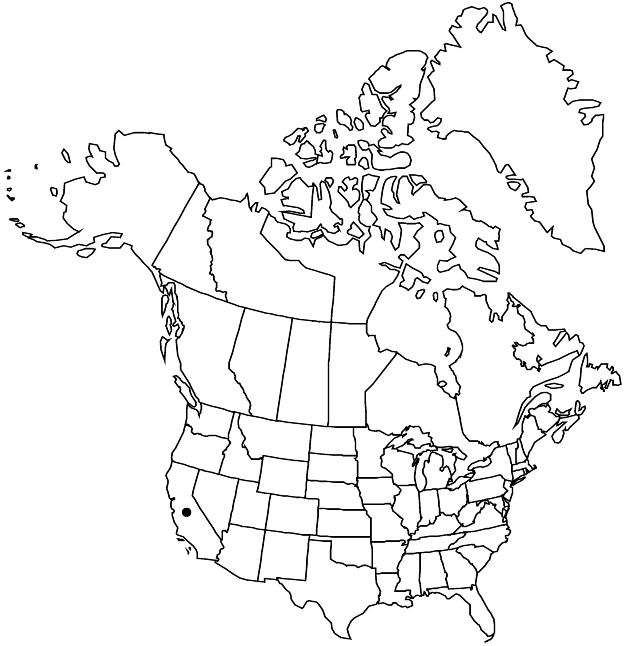Difference between revisions of "Hesperolinon spergulinum"
in N. L. Britton et al., N. Amer. Fl. 25: 86. 1907.
FNA>Volume Importer |
imported>Volume Importer |
||
| (6 intermediate revisions by 2 users not shown) | |||
| Line 1: | Line 1: | ||
{{Treatment/ID | {{Treatment/ID | ||
|accepted_name=Hesperolinon spergulinum | |accepted_name=Hesperolinon spergulinum | ||
| − | |accepted_authority=(A. Gray) Small | + | |accepted_authority=(A. Gray) Small |
|publications={{Treatment/Publication | |publications={{Treatment/Publication | ||
| − | |title=N. Amer. Fl. | + | |title=in N. L. Britton et al., N. Amer. Fl. |
|place=25: 86. 1907 | |place=25: 86. 1907 | ||
|year=1907 | |year=1907 | ||
| Line 12: | Line 12: | ||
|label=Endemic | |label=Endemic | ||
}} | }} | ||
| − | |basionyms={{Treatment/ID/ | + | |basionyms={{Treatment/ID/Basionym |
|name=Linum spergulinum | |name=Linum spergulinum | ||
|authority=A. Gray | |authority=A. Gray | ||
| + | |rank=species | ||
| + | |publication_title=Proc. Amer. Acad. Arts | ||
| + | |publication_place=7: 333. 1868 | ||
}} | }} | ||
|synonyms= | |synonyms= | ||
| Line 31: | Line 34: | ||
|elevation=100–1000 m. | |elevation=100–1000 m. | ||
|distribution=Calif. | |distribution=Calif. | ||
| − | |discussion=<p>Hesperolinon spergulinum occurs in the central and southern North Coast Ranges; there are historical reports from Santa Clara County. The pendent buds, a result of the deflexed and sometimes downward-curved pedicel, and the relatively long styles and stamens are distinctive. The petal appendages are relatively well developed in H. spergulinum; the ligule may be as large as 1 mm and hairy.</p> | + | |discussion=<p><i>Hesperolinon spergulinum</i> occurs in the central and southern North Coast Ranges; there are historical reports from Santa Clara County. The pendent buds, a result of the deflexed and sometimes downward-curved pedicel, and the relatively long styles and stamens are distinctive. The petal appendages are relatively well developed in <i>H. spergulinum</i>; the ligule may be as large as 1 mm and hairy.</p> |
|tables= | |tables= | ||
|references= | |references= | ||
| Line 40: | Line 43: | ||
-->{{#Taxon: | -->{{#Taxon: | ||
name=Hesperolinon spergulinum | name=Hesperolinon spergulinum | ||
| − | + | |authority=(A. Gray) Small | |
| − | |authority=(A. Gray) Small | ||
|rank=species | |rank=species | ||
|parent rank=genus | |parent rank=genus | ||
| Line 52: | Line 54: | ||
|distribution=Calif. | |distribution=Calif. | ||
|reference=None | |reference=None | ||
| − | |publication title=N. Amer. Fl. | + | |publication title=in N. L. Britton et al., N. Amer. Fl. |
|publication year=1907 | |publication year=1907 | ||
|special status=Endemic | |special status=Endemic | ||
| − | |source xml=https:// | + | |source xml=https://bitbucket.org/aafc-mbb/fna-data-curation/src/2e0870ddd59836b60bcf96646a41e87ea5a5943a/coarse_grained_fna_xml/V12/V12_652.xml |
|genus=Hesperolinon | |genus=Hesperolinon | ||
|species=Hesperolinon spergulinum | |species=Hesperolinon spergulinum | ||
Latest revision as of 19:16, 5 November 2020
Herbs, 10–30(–50) cm, glabrous or glabrate; branches from distal nodes, alternate, widely spreading. Leaves alternate; stipular glands absent or minute; blade linear or narrowly oblong, 10–35 × 0.5–2(–2.5) mm, base flat, not clasping, margins without stalked glands. Inflorescences: cymes monochasial (helicoid), open, internodes long, flowers widely scattered; bract margins without prominent glands. Pedicels 5–15(–25) mm, 5–25 mm in fruit, pendent in bud, deflexed at 90° angle, slightly bent at apex. Flowers: sepals erect, not reflexed at tip, ovate, 1.5–2.5(–3.5) mm, equal, margins minutely gland-toothed, surfaces glabrous; petals widely spreading to reflexed, white or pale pink, usually darker-veined, obovate, 4–7 mm, apex obtuse; cup white, rim petal attachments in indentations; stamens exserted; filaments (3–)4–5(–7) mm; anthers pink to red-purple, white-margined, dehisced anthers 1.2–2 mm; ovary chambers 6; styles 3, white, 3.5–7 mm, exserted. 2n = 36.
Phenology: Flowering May–Aug.
Habitat: Chaparral or woodland margins, serpentine soils.
Elevation: 100–1000 m.
Discussion
Hesperolinon spergulinum occurs in the central and southern North Coast Ranges; there are historical reports from Santa Clara County. The pendent buds, a result of the deflexed and sometimes downward-curved pedicel, and the relatively long styles and stamens are distinctive. The petal appendages are relatively well developed in H. spergulinum; the ligule may be as large as 1 mm and hairy.
Selected References
None.
